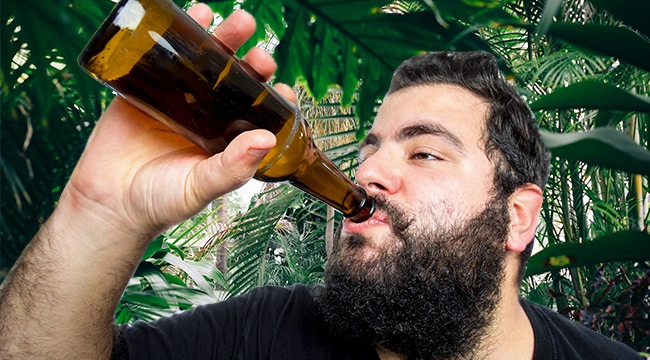
Lager is one of the most common beer styles in the world. But, did you know that the yeast used to make your Labatt Blue, Budweiser, PBR, and Red Stripe is actually made using a hybrid lager yeast? Half of its genes come from ale yeast and the other half come from an unknown species. For years, scientists were baffled by this unknown yeast and its origin. But, in 2011, researchers were trekking through the jungles of Patagonia when they came across something unusual. It was an Indiana Jones-type adventure, so it’s fitting that it ended in discovering the Holy Grail of yeasts.
While walking through the jungle, a scientist named Diego Libkind stepped on a fungus and noticed it gave off the distinct odor of beer. It turned out that he had just stumbled upon one of the most important findings in the history brewing. After sequencing the genes, Libkind and his compatriots found that the species they discovered was in fact the unknown species from the hybrid yeast: the lager mother yeast.
“It’s a 99.5 percent match to the missing half of the lager genome. It’s clear that it is this species,” researcher Todd Hittinger told LiveScience in 2011.”Nothing they could find in the wild or in the freezer collections could match the missing component of the lager yeast.”
The researchers published the discovery in a scientific article in the National Center for Biotechnology Information. This news caught the eye of Willem van Waesberghe, Global Craft and Brew Master at Heineken.
“After I read it, I knew he had found the missing parent of our A-yeast,” said Waesberghe.
Waesberghe quickly decided that he wanted Heineken to make a beer using the yeast. The task was more difficult than it anyone expected, though. The yeast, named Saccharomyces eubayanus, proved extremely hard to tame. In fact, it took years of study before the Dutch brewers at Heineken were finally able to harness the yeast to make a beer they actually enjoyed. Even the slightest variation and the beer had a harsh or overpowering flavor.
“The yeast comes from the wild,” says Dr. Ir. Jan-Maarten Geertman, an expert on beer yeasts. “We have had to really understand the specific needs and desires of this process and adjust some of the conditions during brewing specifically for this yeast.”
https://www.instagram.com/p/BM7fejADqFA/?tagged=h41
Once Heineken landed on a beer they liked, the decided to call it H41. The name is derived from the latitude coordinate of the beech forest in Patagonia where this yeast was discovered (a second beer, H71, is available in France only).
“As a master brewer, it has always been a dream to take a yeast from the wild and create a new lager style,” says Waesbergh. The result is a “wild lager” with a much stronger yeast flavor than the traditional Heineken lager.
Who knows if the wild lager style will catch on, but H41 (available in the US in 2018) is the first on the market. So far, nobody else has been able to brew a beer using the yeast.
“I know some have tried, but thus far unsuccessful,” says Dr. Geertman.
With the discovery of the mother yeast, Heineken’s ‘Lager Explorations’ series was born — H41 is the first of the line to hit the market. Is the discovery of this yeast the beginning of “designer beers”? Once others harness this yeast, will it mean the end of hybrid yeasts as we know them or is this going to simply be a blip on the radar? Only time will tell.






